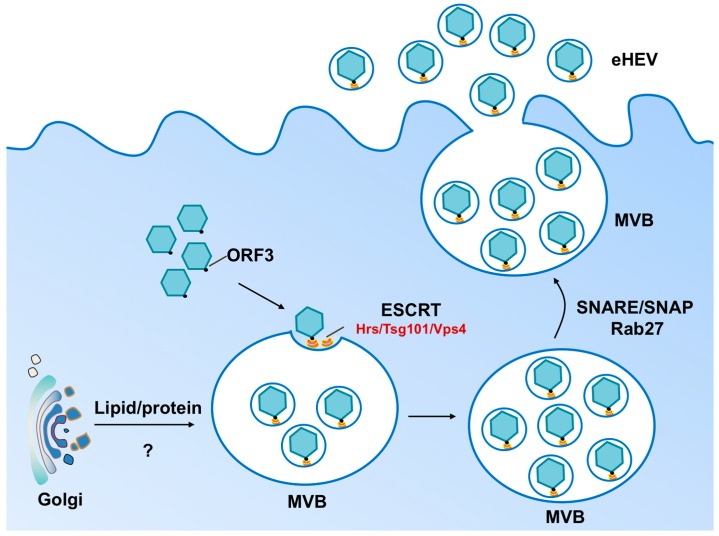Figure 1.
Model for biogenesis of eHEV. During the late stage of infection, HEV capsids are assembled in the cytoplasm and encapsidate viral genomes. ORF3 interacts with both Tsg101 (an ESCRT-associated protein) and the viral capsid, directing the budding of the viral capsid into the multivesicular bodies (MVB). Other components of the ESCRT machinery, including Hrs and Vps4, are also implicated in eHEV release. The quasi-enveloped HEV particles are subsequently released from infected cells upon fusion of the MVB membrane and the plasma membrane, a process that is regulated by Rab27 and other host factors such as SNARE/SNAP [31]. The origin of the eHEV membrane remains unclear, but is likely to derive from internal organelles such as the Trans-Golgi network.

